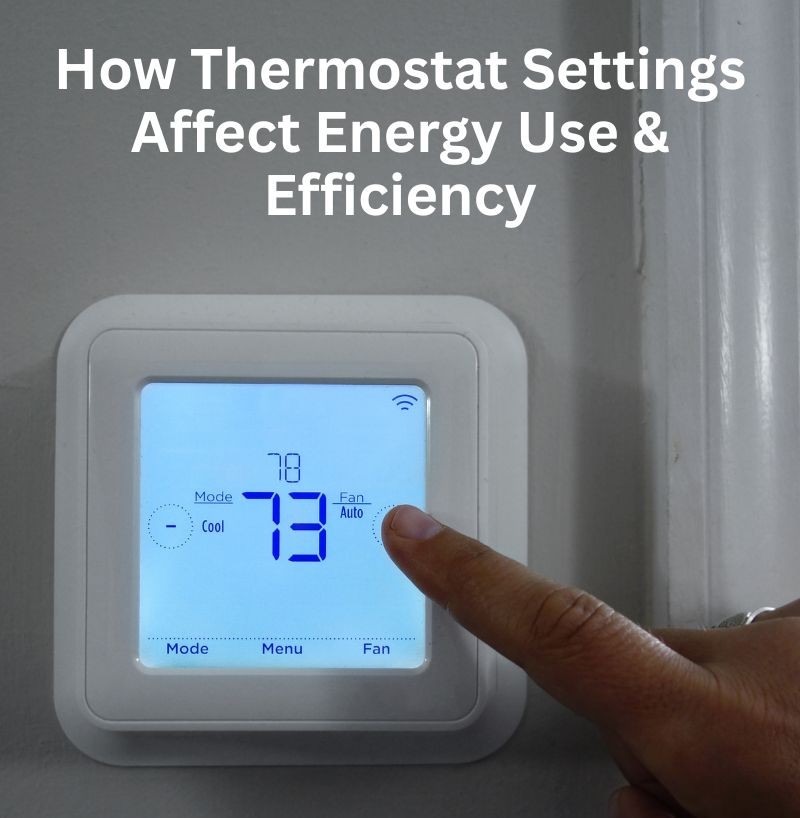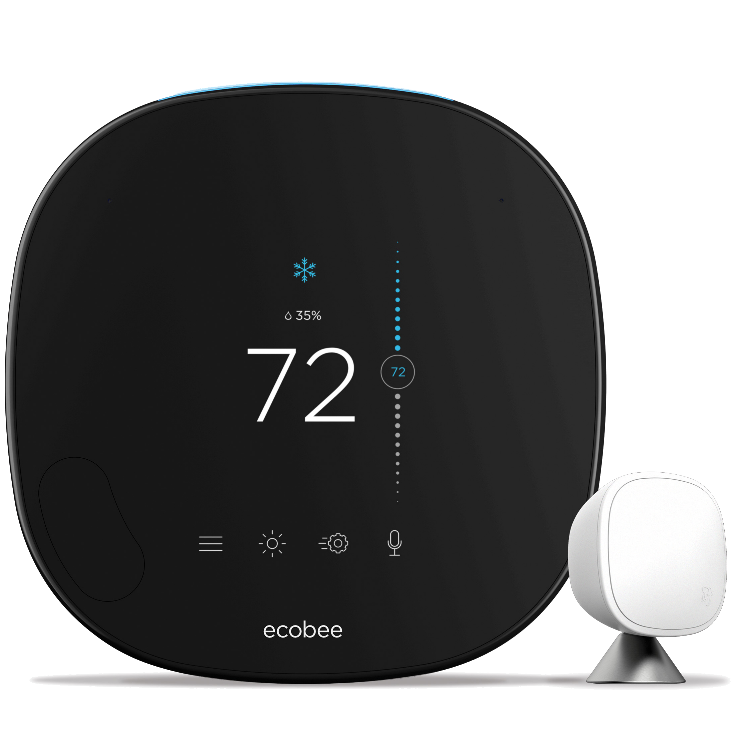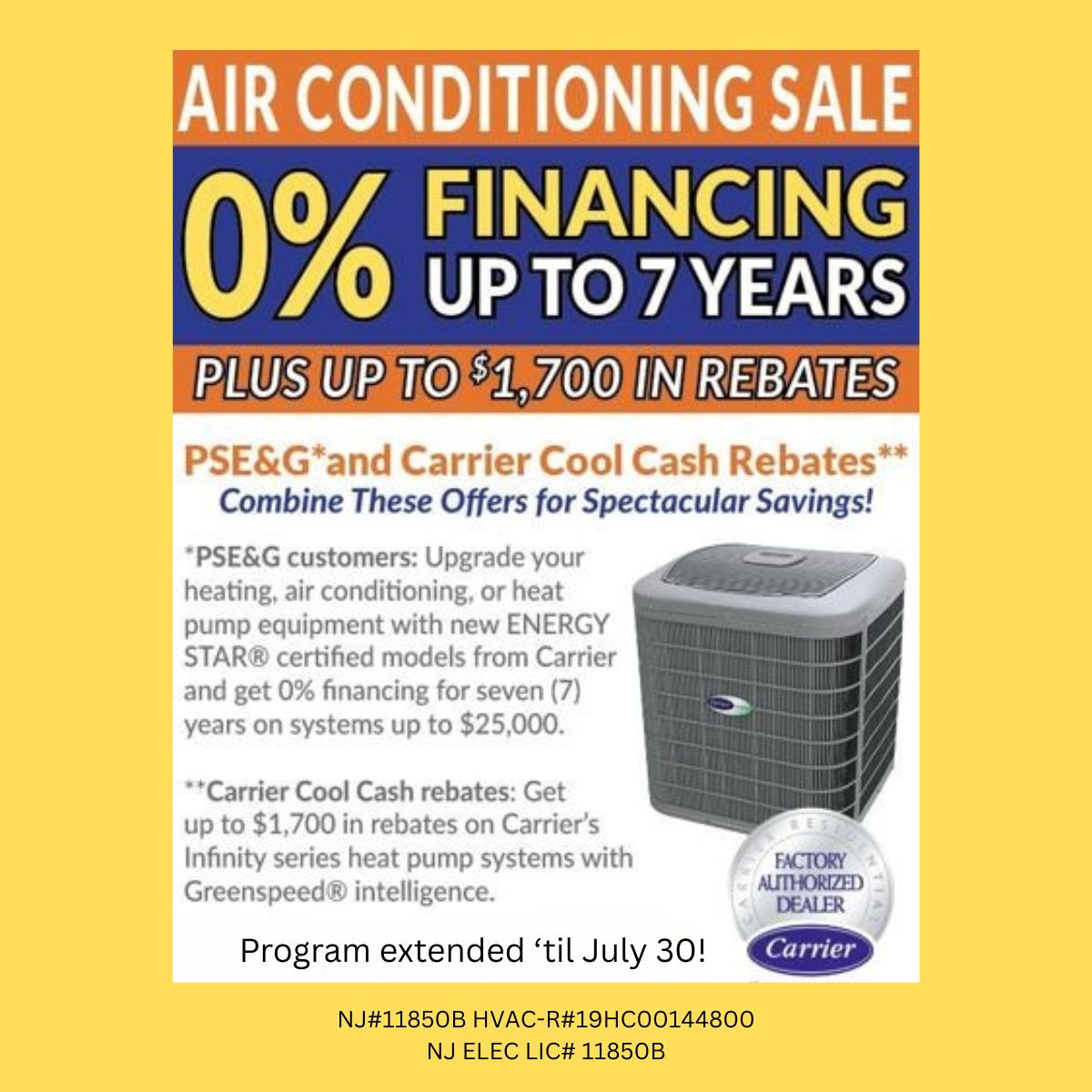©2025 BloomfieldCooling.com. All Rights Reserved. | Privacy Policy | Sitemap | Powered by Media Consultants, LLC


 Ask anyone in northern New Jersey about the weather in our area and they are likely to say it’s the only place where you can get all four seasons within one week.
Ask anyone in northern New Jersey about the weather in our area and they are likely to say it’s the only place where you can get all four seasons within one week.
Between heat waves and sudden cool downs, pleasant breezes to chilling rainstorms, spring and summer (into fall) in North Jersey are hosts to a wide range of temperatures and weather patterns.
All that hot-to-cool variation in outdoor temperatures may tempt homeowners to change the thermostat settings frequently to keep indoor air comfortable. But does all that fiddling with the thermostat drive up HVAC energy use?
The thermostat is the heartbeat of your HVAC system, its heating and cooling control panel. Modern, smart and programmable thermostats (like the ecobee) are designed with energy efficiency as a priority, but that efficiency can be negatively affected by too many significant changes to the temperature settings. That’s because your system must adjust its output according to the setting and this can temporarily increase energy usage. However, the question is whether these tweaks increase actual energy consumption.



The trick here is to keep the difference between the indoor and outdoor temperatures as small as possible because the smaller the difference, the lower the energy consumption. However, this may not feel optimal since the whole idea behind central air conditioning is that the home is nice and cool on hot summer days.
The U.S. Department of Energy advises that 78° Fahrenheit is the ideal temperature for an air conditioner setting to balance energy savings and comfort (when people are home and awake and adjust for away and sleep hours). Maintaining a higher interior temperature indoors will slow the flow of heat into your house, which saves energy on air conditioning.
Of course, comfortable indoor temperature settings are subjective—what one family feels is comfortable may send another family running for ice packs to cool down.
Bottom line: every degree of extra heating or cooling can increase both energy usage and costs, so set the thermostat within a few degrees of outside temperature so that your HVAC systems are not wasting energy.
Try to keep your thermostat setting relatively consistent over long periods (such as during the day when people are at work or school). Frequent, short-term temperature adjustments (every few hours, for example) will cause your HVAC system to start and stop more frequently which could lead to higher energy use. It can also cause more wear and tear on the system, which will be forced to cycle on and off more than necessary. This in turn can lead to more maintenance and repairs and shorten the HVAC unit’s lifespan.
Installing programmable or smart thermostats in each zone optimizes energy use because you can easily adjust the ambient temperature based on your typical routine and preferences. Presetting these thermostats avoids frequent manual adjustments and minimizes unnecessary energy use.
Adjusting the cooling or heating when they are less needed can save energy but “setbacks”—drastically lowering the heat or cranking up the AC—can backfire because the HVAC system must use more energy to return to a comfortable indoor temperature, as we shared in last month’s article.


 As noted above, extreme temperature swings lead to greater energy consumption.
As noted above, extreme temperature swings lead to greater energy consumption.
Jack Lamb, president of Bloomfield Cooling, Heating & Electric, Inc. advises customers that “HVAC units are most efficient when maintaining a constant temperature. Setting your thermostat at a comfortable baseline temperature and then making small adjustments as needed is the best way to go. Minor temperature changes of less than five degrees don’t do much to harm energy consumption. Therefore, anything above that five-degree differential will make the unit work harder, which will drive up the utility bill.”
Jack also reminds customers that regular HVAC maintenance ensures the system will operate at peak efficiency. Other factors that affect energy use are the quality of the building’s insulation and windows.
Contact Bloomfield Cooling, Heating & Electric about the Carrier Cash rebate program, which is extended until July 30, and provides up to $1700 in rebates on Carrier’s Infinity series heat pump systems with Greenspeed® Intelligence. Plus, PSE&G customers may qualify for zero percent financing for up to seven years on the installation of new Energy Star® certified heating, air conditioning, or heat pump equipment (up to $25,000).